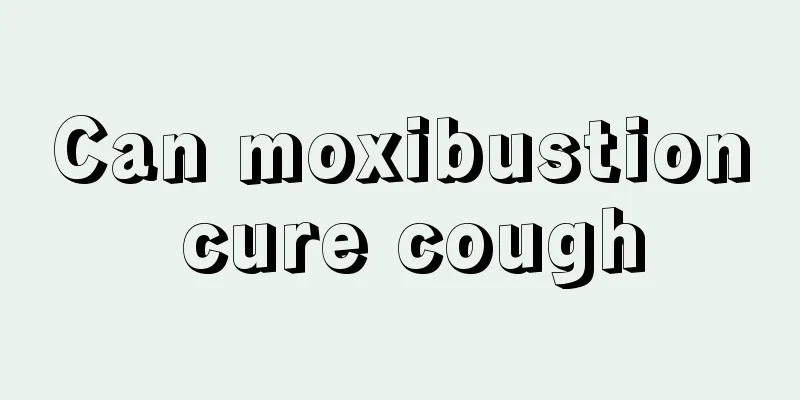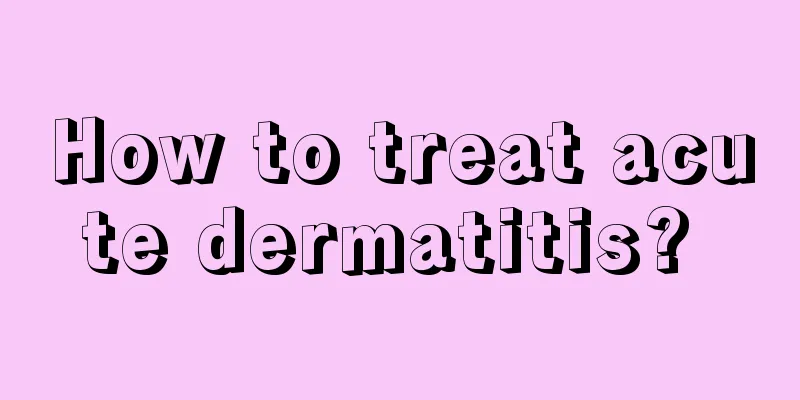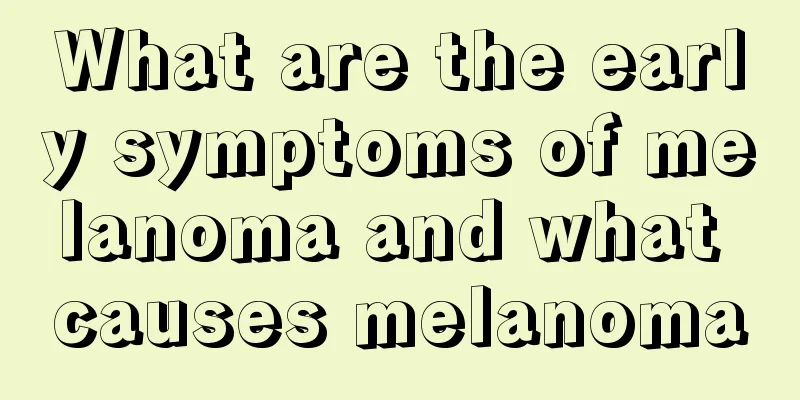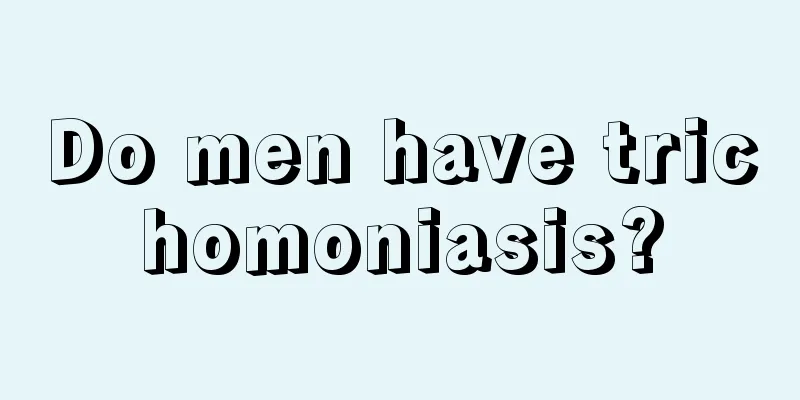Can moxibustion cure cough

|
There are actually many ways to treat cough, but most people choose to take medicine. Sometimes you can also choose to take some lozenges, because lozenges are also more effective in treating cough. When necessary, you can finally take acupuncture or massage, and some other massage methods are all OK. Moxibustion is generally a more effective traditional Chinese medicine treatment method. So can moxibustion treat cough? 1Which parts of the body should be moxibustioned to treat cough Dazhui point: On the back, lower your head and find the bony protrusion in the middle of the back of the neck, which is the spinous process of the seventh cervical vertebra, and find the Dazhui point in the bone gap below. Feishu point: First lower your head and find the bony protrusion in the middle of the back of your neck. This is the spinous process of the seventh cervical vertebra. Count down three such protrusions to the spinous process of the third thoracic vertebra. The Feishu point is two fingers away from the side. Tanzhong point: On the chest, on the anterior midline, at the level of the fourth intercostal space, the midpoint of the line connecting the two nipples is the Tanzhong point. Tiantu point: Tiantu point is located on the anterior midline of the neck, in the middle of the suprasternal fossa. Tianmen Point: First lower your head and find the bony protrusion in the middle of the back of your neck. This is the spinous process of the seventh cervical vertebra. Count down two such protrusions to the spinous process of the second thoracic vertebra. The Tianmen Point is two fingers away from the side. Shenzhu Point: First lower your head and find the bony protrusion in the middle of the back of your neck. This is the spinous process of the seventh cervical vertebra. Count down three such protrusions to the spinous process of the third thoracic vertebra. The depression below the spinous process is Shenzhu Point. Gaohuang Point: First lower your head and find the bony protrusion in the middle of the back of your neck. This is the spinous process of the seventh cervical vertebra. Count four such protrusions downward, which are the spinous processes of the fourth thoracic vertebra. The Gaohuang Point is four fingers away from it. Spleen Shu point: Draw a straight line along the lower edge of the shoulder blade to the spine. This point is below the spinous process of the seventh thoracic vertebra. Count down 4 protrusions and then think about the point two fingers away from both sides. Shenshu point: Lie prone, with the highest point of both waist bones at the level of the fourth lumbar vertebra. Count two lumbar vertebrae upwards and two fingers to the sides to find the Shenshu point. Fenglong Point: Fenglong Point is located on the anterior and lateral side of the calf, at the point where the outer knee pit and the outer ankle tip are connected. It is two horizontal fingers outside the anterior crest of the tendon. Dingchuan point: First lower your head and find the bony protrusion in the middle of the back of your neck. This is the spinous process of the seventh cervical vertebra. The Dingchuan point is 0.5 inches to the side. 2. Moxibustion for cough caused by external factors Wind-cold attack on lungs Main symptoms: heavy and hoarse cough, shortness of breath, itchy throat, thin and white sputum, often accompanied by nasal congestion, clear runny nose, headache, limb aches, chills and fever, no sweating and other external symptoms, thin white tongue coating, floating or floating-tight pulse. Moxibustion acupoints: The patient lies prone and moxibustion is applied to the Dazhui and Fengmen acupoints. Use the method of gentle moxibustion with moxa sticks, moxibustion each acupoint for 10-15 minutes, 5-10 times as a course of treatment; use the method of moxibustion through ginger, moxibustion each acupoint 5-7 times, once a day or every other day, 7-10 times as a course of treatment; use the method of moxibustion through garlic, change the garlic slices after every 3-4 moxibustions, until the moxibustion site appears moist, red and hot, and the patient feels comfortable, 5-7 times per acupoint, once a day or every other day, twice a day for acute and severe cases, 7-10 times as a course of treatment; perform scar-free moxibustion according to the selected acupoints, apply a little garlic juice or oil on the skin surface of the acupoints to be moxibustioned, place a moxa cone the size of a grain of wheat on the acupoints, 3-7 times per acupoint, once a day or every other day, 7-10 times as a course of treatment. Moxibustion effects: relieving exterior symptoms, dispelling cold and relieving cough. Moxibustion for cough caused by external factors Wind-heat attacking the lungs Main symptoms: coughing and expectoration with yellow or sticky sputum, dry throat and sore throat, often accompanied by aversion to wind, fever, headache, yellow nasal discharge, thirst and other superficial heat symptoms, thin yellow tongue coating, and rapid or slippery pulse. Moxibustion acupoints: The patient lies prone, and moxibustion is applied to Lieque, Hegu, Feishu and Dazhui points. Use moxa sticks for gentle moxibustion, with continuous stimulation of warmth, for 5-10 minutes each time. Alternatively, you can use ginger moxibustion. Take fresh old ginger, cut it into 0.2-0.5 cm thick slices according to the location of the acupuncture point, pierce several holes in the middle, and place the ginger slices on the skin of the selected acupuncture points during moxibustion. Place large or medium moxa cones for moxibustion. When there is a burning sensation on the skin of the moxibustion site, slightly lift the ginger slices, or change the moxa cones and moxibustion again, 3-5 times for each acupoint. Moxibustion effects: dispel wind and heat, promote lung function and relieve cough. Moxibustion for cough caused by external factors Wind-dryness damages the lungs Main symptoms: itchy throat and dry cough, no sputum or little sputum that sticks into threads, uncomfortable sputum, or sputum with blood, dry and sore throat, dry lips and nose, taste in the mouth, often accompanied by nasal congestion, headache, slight chills, fever and other external symptoms, red and dry tongue with little fluid, thin white or thin yellow tongue coating, and floating pulse. Acupoints for moxibustion: With the patient in prone position, moxibustion is applied on Dingchuan, Dazhui, Fengmen and Feishu points. Use moxa sticks for gentle moxibustion, with continuous stimulation of warmth, for 5-10 minutes each time. Alternatively, you can use ginger moxibustion. Take fresh old ginger, cut it into 0.2-0.5 cm thick slices according to the location of the acupuncture point, pierce several holes in the middle, and place the ginger slices on the skin of the selected acupuncture points during moxibustion. Place large or medium moxa cones for moxibustion. When there is a burning sensation on the skin of the moxibustion site, slightly lift the ginger slices, or change the moxa cones and moxibustion again, 3-5 times for each acupoint. Moxibustion effects: dispel wind and moisten dryness, promote lung function and relieve cough. |
<<: The difference between snow chrysanthemum and fetal chrysanthemum
>>: What is the appropriate height for a latex pillow
Recommend
What does it mean to be energetic? Five tips to make you energetic
When we see that a person's overall condition...
What are the 12 dangers of alcoholism
There are many dangers of alcoholism, and it has ...
What should we pay attention to when treating scrotal enlargement?
When a man's scrotum is swollen, he must be v...
What are the symptoms of insufficient vitality?
Yuanqi is actually defined from the perspective o...
What are some training methods to become smarter? Are they real?
Everyone wants to have a smart brain, but we are ...
A brief discussion on the treatment of prostate cancer
In recent years, prostate cancer has become a maj...
How to remove oil stains from clothes
It is difficult to avoid oil stains on clothes wh...
Tips to control hair pulling
Trichotillomania is a chronic disease, which refe...
Effective methods are needed to prevent lymphoma
The incidence of lymphoma in my country is not hi...
How to treat uremia and hyperphosphatemia?
Many patients with uremia will develop hyperphosp...
Sun exposure can cause skin cancer
There are many types of skin cancer, and the caus...
There are fleshy lumps under the tonsils
There are lumps on the tonsils, which means there...
What is the reason for sore gums
The health of teeth is very important to us. It i...
How long is the lifespan of fixed dentures
Problems with teeth can have a great impact on ou...
What are the treatment options for esophageal fistula?
Esophageal fistula is considered a pathological c...









